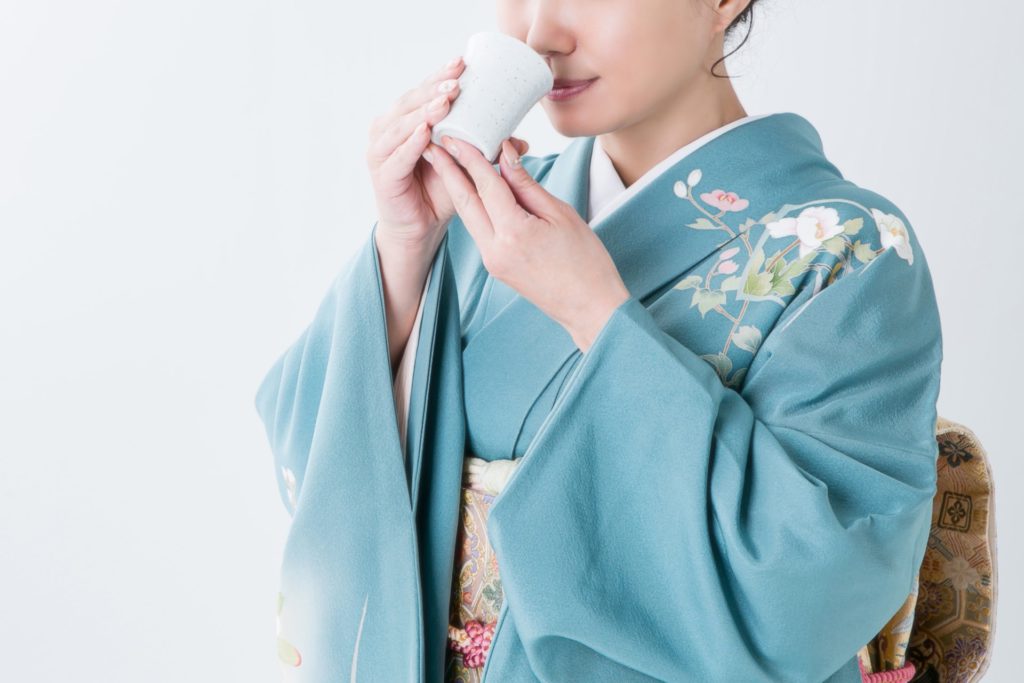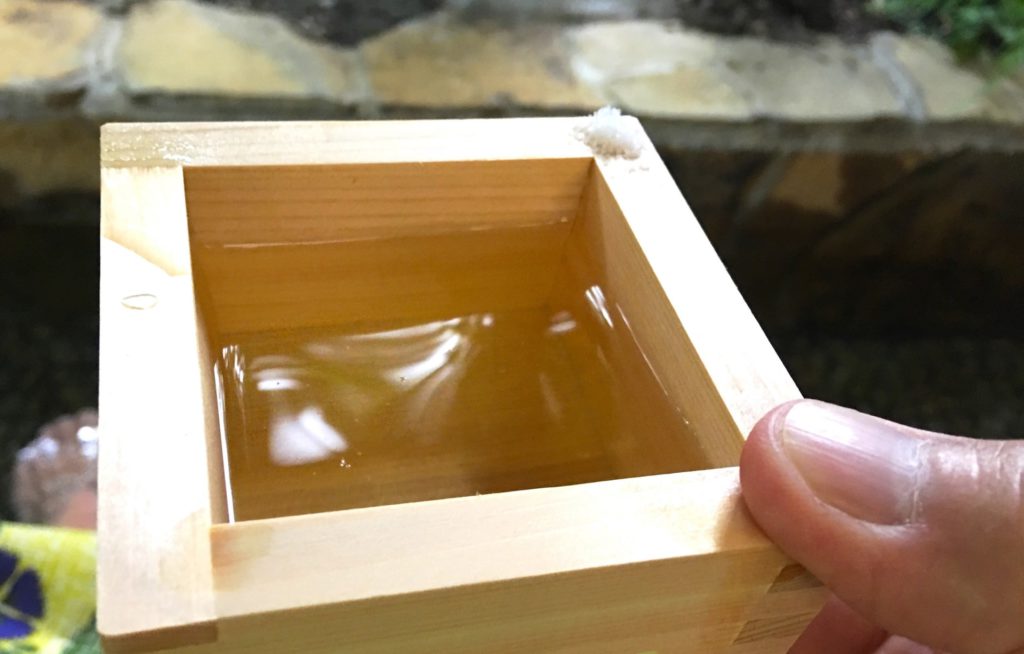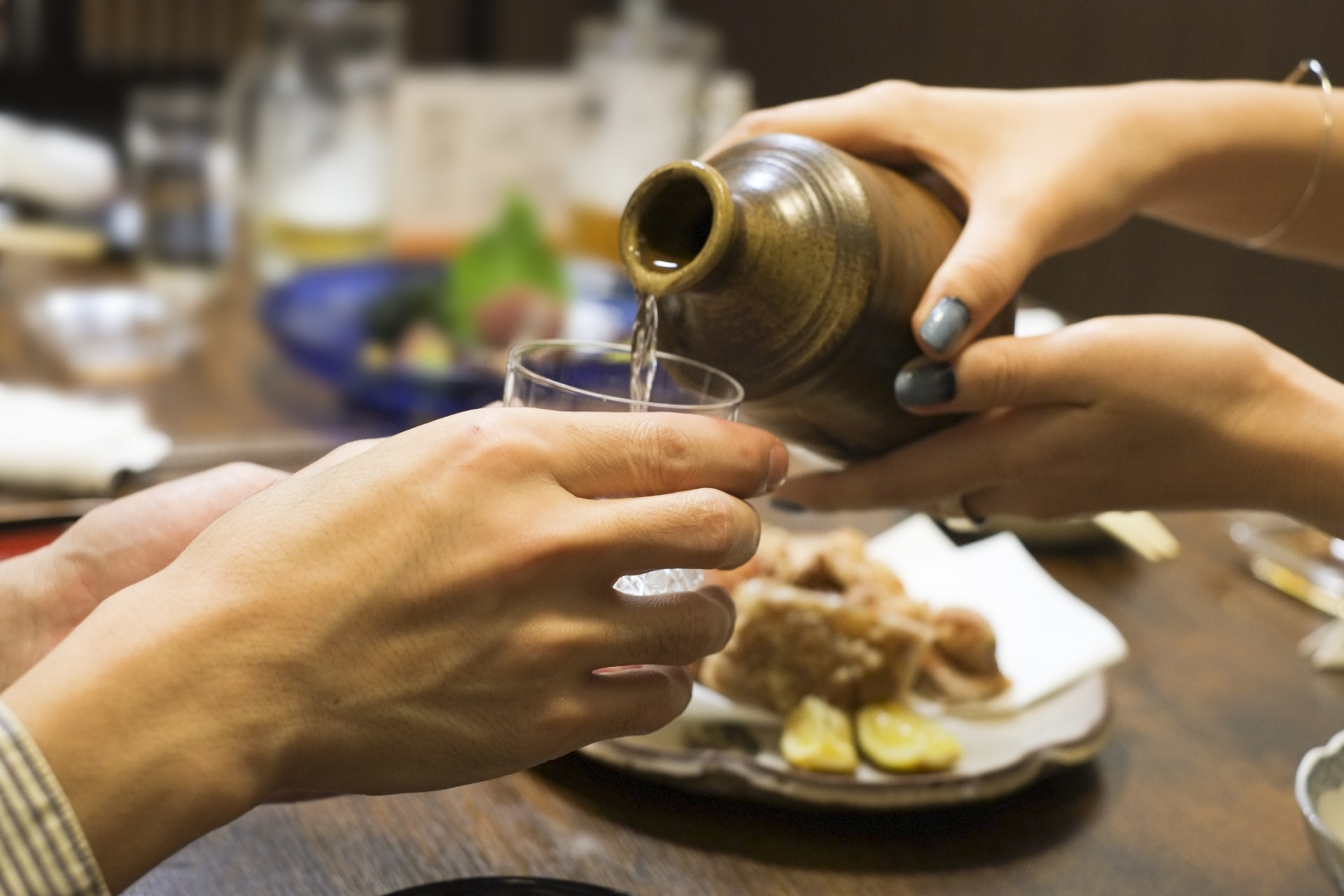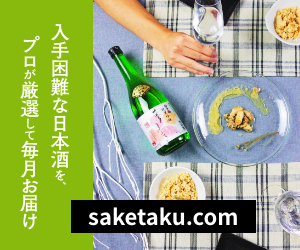- Home
- [Beginning of Sake] - Let's learn more about Sake!
- 5. Savor sake with fragrance! Introducing basic knowledge to become a connoisseur!
5. Savor sake with fragrance! Introducing basic knowledge to become a connoisseur!
- 2020/12/13
- Write comment

In the previous article, “The taste of sake is determined by 8 elements!” I explained about the “taste” of sake.
In this article, along with “taste”, I would like to introduce “smell”, another important factor that determines the taste of sake.
Sake tends to focus on flavors such as “sweet” or “dry”. However, in fact, the smell is also one of the important elements.
As mentioned in the article “The taste of sake can be divided into 4 types!”, humans perceive the “taste” of food and drinks by perceiving both “smell” and “taste”.
It was drawn on a famous gourme manga (“Oishinbo”), but you don’t feel much taste when you eat or drink by pinching your nose.
So smell is an important element in taste.
So this time, I will explain about the “smell” which is indispensable in talking about the “flavor” of sake.
Contents
Basic Knowledge of smell “Uwadachika” and “Fukumika”

The flavor of foods and beverages can be roughly divided into two categories: “Uwadachi” and “Fukumika”.
Uwadachika (Top Notes, Top Noses)
“Uwadachika (or Uwadachiko)” refers to “the scent felt before drinking”.
“Uwadachika” seems to be difficult word, but it is smell that fluffy into the nose before drinking.
Ordinarily, the term “smell” refers to the “uwadachi”.
The “fragrance” introduced in this article will also be about this “uwadachika”.
Fukumika (After flavor)
“Fukumika”, “Fukumiga” or “Fukumiko. It means “the smell that is felt “after drinking” or that is felt with taste.
In Japanese, the meaning is that it’s a scent that you feel after you’re ‘containing’ it in your mouth.
Sometimes it is said that the less the gap between “fukumika” and “uwatachika”, the more balanced the sake is.
The smell of sake is divided into “Ginjo fragrance”, “raw material fragrance”, “mature fragrance” and “lactic acid fragrance.”

Smell is expressed in myriad forms, but it is divided into 4.
I summarized the types of smell below.
[Four scents of sake]
| Type | Taste types | Features |
| Ginjo fragrance | Kunshu | Scents derived mainly from yeast |
| Raw material fragrance | Junshu | Fragrance mainly derived from raw materials of sake |
| Mature fragrance | Jukushu | Fragrances originating mainly over time |
| Lactic acid fragrance | – | Fragrance derived mainly from lactic acid |
Now let’s take a closer look at the details.
Ginjo fragrance : Scent likened to fruit or flower
Ginjo fragrance is smell felt from sake with the name “Ginjo”.
The image of smell is exemplified by fruits and flowers, and is expressed as “fruiting, bright fragrance,” etc.
Among the four taste types of sake, it is smell that appears mainly in Kunshu.
I will explain it further from here, but it will be a little more specialized.
If you are not good at that, skip reading and proceed to the next “raw material fragrance”.
[Main component of Ginjo fragrance]
Ginjo fragrance is a scent produced mainly during alcoholic fermentation of yeast.
The main ingredients are ethyl caproate and isoamyl acetate.
Ethyl caproate
Ethyl caproate is an exemplary ingredient in fruits such as apples and pears, which are characterized by greasy sweetness and acidity.
This is the main component of the Ginjo fragrance.
In recent years, many yeasts that produce a large amount of ethyl capronate have emerged.
Among them, “Kyokai 1801” and “M310” are typical.
Nowadays, more people drink sake, and sake with the scent of ginjo tend to be liked by young people, women, and people from overseas.
Reflecting this trend, sake containing ethyl caproate tends to earn a high reputation at the National Liquor Evaluation Conference held annually by the National Research Institute of Brewing liquors .
Isoamyl acetate
Isoamyl acetate is an ingredient that can be exemplified by fruits such as bananas and melons that have a rich sweet taste.
“Kyokai 9” and “Kyokai 14” is the representative yeast which produce the ingredient.
Fusel oil (higher alcohol)
“Fusel oil” is a fatty substance that has a higher molecular weight and a higher boiling point than ethyl alcohol, commonly called “alcohol”.
Also it is called “higher alcohols”.
Fusel oil contains various aroma ingredients such as acetate and ethyl hexanoate.
Fusel oil tend to be produced when low-refined rice is used or when fermentation temperature is low.
The scent is similar to the scent of whiteboard markers.
[Unfavorable sake scent]
- Ethyl acetate: A scent exemplified by semedine and adhesives.
- Diacetyl is the scent that can be expressed in fermented butter and yogurt. In the case of sake, these aromas are considerd as smell reminiscent of unpleasant sweetness.
The above two ingredients are said to have an undesirable smell.
Even in the case of Ginjo Fragrance, not all scents are the same, and the images differ greatly depending on the ingredients.
Material fragrance : A scent likened to rice or malted rice
Material fragrance is a scent derived from rice or malted rice, which is the raw material of sake.
Material fragrance is the core smell of sake.
The smell image can be compared to rice, malted rice and grains, candy and marshmallows, and is expressed as “well-rounded fragrance”.
Among the four types of sake flavors, Material fragrance often appears in Junshu, and is a fragrance that is felt with sake that comes with the word “junmaishu”.
Mature fragrance: A flavor perceived over time
Mature fragrance is a scent that appears as the ingredients of sake slowly change over time.
The image of the scent is similar to caramel, black nectar, nut, dry fruit, or spice, and is described as “deep, heavy scent”.
Among the four flavor types of sake, it has a fragrance that is mainly abundant in Jukushu.
The main component of mature fragrance is the “sotron,” which is produced by the breakdown of amino acids through a browning reaction (also called the Maillard reaction).
[‘Hineka’]
Likewise, the smell that is perceived over time may also be called “Hineka”, thw meaning of the word in Japanese is “old smell”.
“Hineka” is a degraded odor that occurs when sake is affected by heat”.
“Hineka” is a smell compared to old rice or damaged grain, but in some cases it feels like a fragrance similar to caramel or spice, just like mature fragrance.
It is difficult to distinguish between “mature incense” and “hineka” by only fragrance when it is in a state where people who don’t know, are not used to it, or sake is cooled to make the fragrance difficult to stand.
When alcohol deteriorates under the influence of heat, it becomes dark yellow in color or feels unpleasant even if it has the same scent as mature scent.
Therefore, whether or not it is a “hineka” is determined comprehensively by taking such appearance into consideration.
Lactic acid fragrance: a flavor similar to dairy products
Lactic acid fragrance is a scent derived from lactic acid bacteria and lactic acid, which are used in the manufacture of most sake.
The image is a fragrance similar to dairy products such as fresh cream and yogurt.
Unlike the other three fragrance, lactic acid fragrance is not likely to appear in any of the 4 sake types.
However, in the sake of the Kimoto-zukuri and Yamahai-zukuri (method of sake brewing), which are produced by growing lactic acid bacteria, it is relatively common to feel this lactic acid fragrance.
Let’s learn basic knowledge about the smell of sakel!

I have explained the smell of sake.
I think many people feel the smell when you drink sake.
However, it is difficult to express these smell.
At such times, it is easier to express the smell by knowing the basic knowledge about the smell of sake, especially how to liken the aroma (such as flowers, fruits, grains, black molasses, nuts, dried fruits, spices, etc., and concrete things such as roses, pears, rice, caramel, almonds, dried grapes, cinnamon, etc.).
The smell of sake is one of the important elements along with the flavor.
If you acquire knowledge of smell of sake, I think the way of tasting sake will also change.
Also, people called “connoisseur” have basic knowledge about smell.
Based on such basic knowledge and a variety of experiences, I think that you can further enjoy the tastes and smell of sake and convey them to people with accurate expressions.
Let’s learn the basic knowledge about the smell of sake in this article and experience the feeling that connoisseurs do.
The next time is the 6th “The taste of sake changes at temperature! Introducing how to cool and warm sake to drink sake deliciously!”
It's our great pleasure if this article is helpful for you.
Comment (0)
No trackbacks yet.










No comments yet.